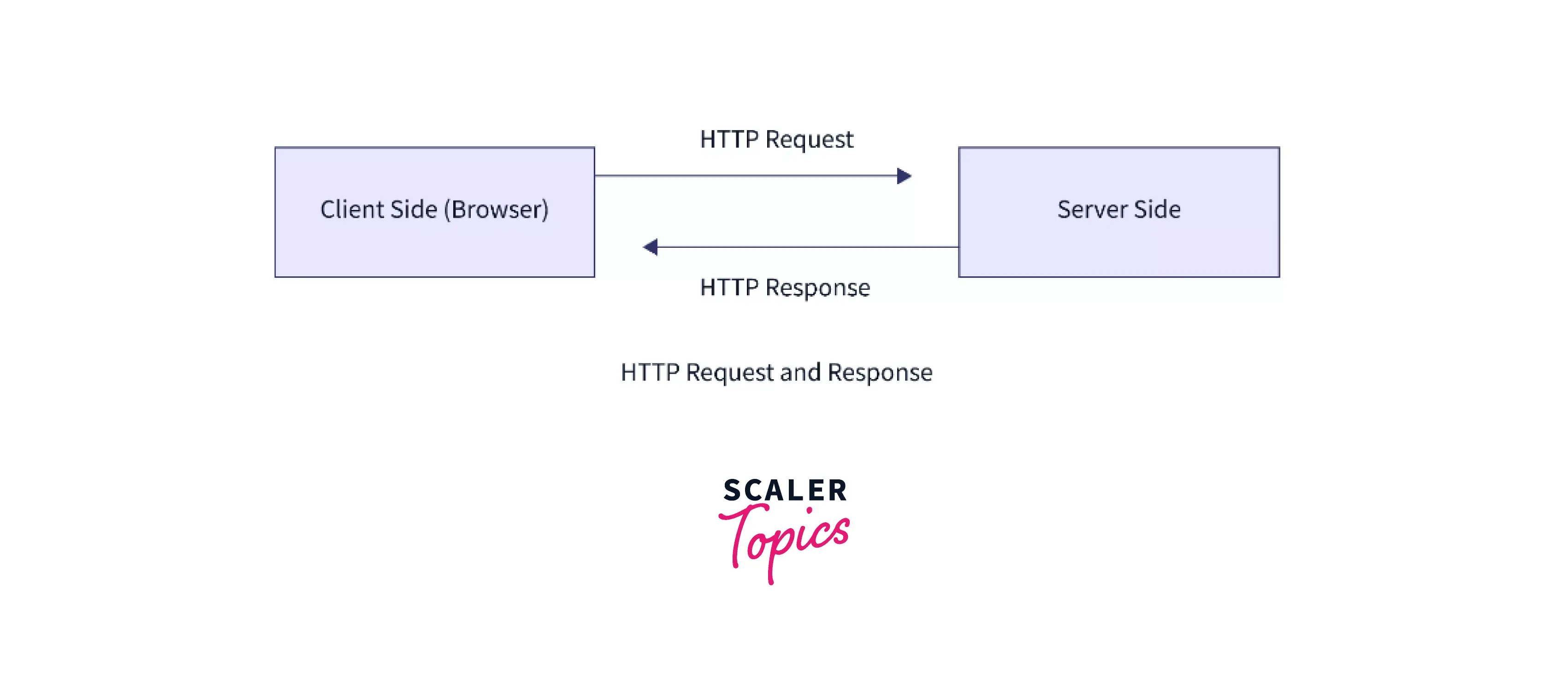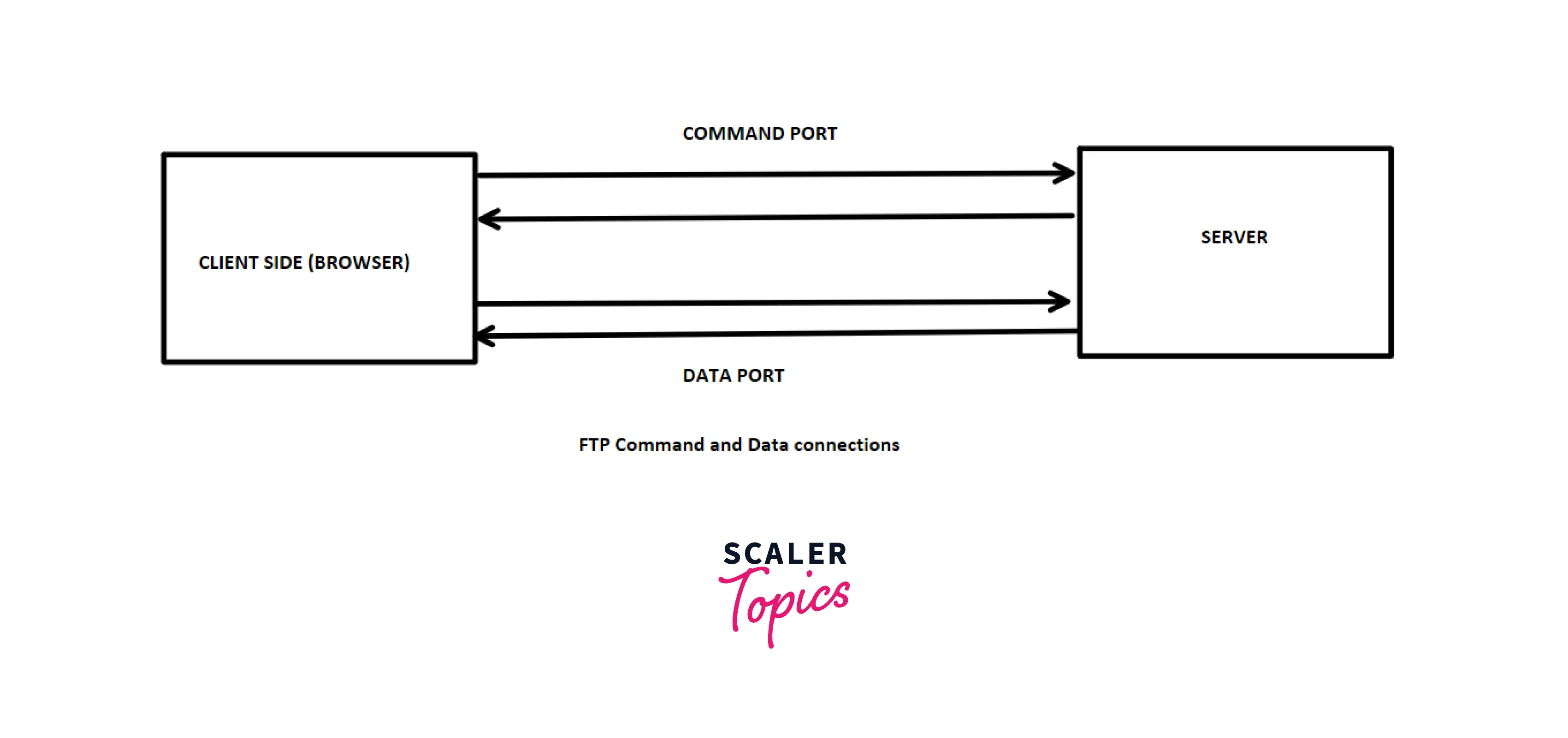HTTP (Hypertext Transfer Protocol) and FTP (File Transfer Protocol) are the two internet protocols that are used to transfer data between a client and a server. Both of these protocols operate on the Application Layer of the OSI model. We also have a separate article OSI-Model where you can read about the OSI Model and its layers in detail.
Although both protocols work on the same layer, there is a difference between HTTP and FTP. In this article, we will discuss this in detail.
What is HTTP?
HTTP stands for Hypertext Transfer Protocol and is an Application Layer Protocol of the OSI Model which is used to transfer hypertext data (for example HTML data), plain text data, audio data, video data, etc. between a client and a server. HTTP creates a TCP (Transmission Control Protocol) connection and the data is transferred on this TCP connection only. HTTP works on PORT 80 and it is stateless. Also, HTTP is a pull protocol i.e. the client requests the server to transfer the specified data.

What is FTP?
FTP stands for File Transfer Protocol and is another Application Layer Protocol of the OSI Model which is used to transmit files from one host to another. Like HTTP, it is also based on a client-server architecture that relies on a TCP (Transmission Control Protocol) to transfer files. It is an older protocol that has been now replaced with the new protocols.
FTP works on two ports, PORT 20 and PORT 21. It creates two connections, first is a command/control connection (used to establish a connection between client and server) on the command port (PORT 21), and the second is a data connection (used for transfer of data between client and server) on the data port (PORT 20).

Advantages and Disadvantages of HTTP
Advantages
- HTTP can be persistent and has lower latency because, in persistent HTTP, there is no need to establish a connection every time data has to be sent. The establishment of connection takes place only once and after that, data can flow without any obstacle.
- When a page is requested by an HTTP request for the first time, it gets stored in a cache memory called page cache. These result in lesser page loading time when that page is requested again since it is fetched from the cache memory only instead of from the server.
- HTTP is secure. Each file requested from an HTTP request opens its separate and independent HTTP connection and this connection is closed once the file is completely retrieved.
Disadvantages
- HTTP does not use any cryptographic algorithms to encrypt the data that is transferred over it. This raises some threats to data integrity.
HTTPS (Hypertext Transfer Protocol Secure)is a protocol that has overcome this drawback of HTTP by including cryptographic algorithms to encrypt the data that is transferred over it. - Generally, HTTP needs to create multiple connections to transfer a file over it. This results in an administration overhead which makes the file transfer inefficient.
- HTTP is not supported in IoT networks due to the availability of sensors in them.
Advantages and Disadvantages of FTP
Advantages
- FTP is the fastest in transferring files because, unlike HTTP, it does not add sub information like headers to the data before sending it.
- To transmit a file over an FTP connection, the user has to log in with a username and password using the command port. This makes FTP secure.
- FTP allows the transfer of multiple files. It also provides us with the ability to resume the file transfer if the connection is lost in the middle of the file transfer.
Disadvantages
- Like HTTP, FTP also does not use any cryptographic algorithms to encrypt the data that is transferred over it. This raises some threats to data integrity.
- The passwords that are used to log into FTP are in plain text format. This makes it prone to hacking.
- In FTP, only one command can be sent over the command port at a time due to which, it is not possible to transmit multiple files simultaneously over an FTP connection.
HTTP vs FTP: Comparison Chart
| Comparison | HTTP | FTP |
|---|---|---|
| Full form | HTTP stands for Hypertext Transfer Protocol. | FTP stands for File Transfer Protocol. |
| Use case | HTTP works on client-server architecture and is used to transfer web pages between a client and a server. | FTTP works on client-server architecture and is used to transmit files among different hosts. |
| Connection Type | HTTP connection is built upon TCP (Transmission Control Protocol) | FTP connection is built upon TCP (Transmission Control Protocol) |
| Types of connections | HTTP only establishes a data connection. | FTP establishes two types of connections, command connection and data connection. |
| PORT used | HTTP establishes a TCP connection on PORT 80. | FTP establishes command connection on PORT 21 and data connection on PORT 20. |
| Authentication | HTTP does not support authentication. | FTP supports authentication. The client needs to log in through the command connection and after this only, the clients can access the files. |
| TCP connection types | HTTP supports both persistent and non-persistent types of TCP connections. | FTP only supports a non-persistent type of TCP connection. |
| Protocol state | HTTP is a stateless protocol. But it can maintain states with the help of cookies. | FTP can maintain state. |
Key Difference between HTTP and FTP
- HTTP is used to transfer web pages between a client and a server while FTP is used to transmit files among different hosts.
- HTTP does not require authentication while FTP requires authentication to transfer files from one host to another.
- HTTP is a stateless protocol while FTP can maintain states.
- HTTP only creates a data connection while FTP creates both a command and data connection. HTTP uses PORT 80 while FTP uses PORT 20 and 21.
How HTTP is Similar to FTP?
- Both HTTP and FTP use a TCP connection to transmit data over the connection.
- Both HTTP and TCP follow a client-server architecture.
- Both HTTP and TCP establish a data connection over which, data is transmitted.
Which One is Better?
Deciding which protocol is better is a subjective discussion. Each protocol is better than the other in different aspects.
- FTP requires authentication which helps to keep the data secure. HTTP does not have this kind of mechanism but an improved version of HTTP, i.e.
HTTPS (Hypertext Transfer Protocol Secure)uses cryptographic algorithms to encrypt the data which keeps the data secure. - HTTP can create a persistent connection which provides a better performance than FTP which can only create a non-persistent connection.
- When it comes to dealing with large files, FTP is better than HTTP. But if we have to transmit data like a webpage, HTTP is better.
Conclusion
- HTTP stands for Hypertext Transfer Protocol and is an Application Layer Protocol of the OSI Model which is used to transfer hypertext data (for example HTML data), plain text data, audio data, video data, etc. between a client and a server. FTP stands for File Transfer Protocol and is another Application Layer Protocol of the OSI Model which is used to transmit files from one host to another.
- HTTP only creates a data connection while FTP creates both a command and data connection. HTTP uses
PORT 80while FTP usesPORT 20 and 21. - HTTP does not require authentication while FTP requires authentication to transfer files from one host to another.
- HTTP can create a persistent connection which provides a better performance than FTP which can only create a non-persistent connection.